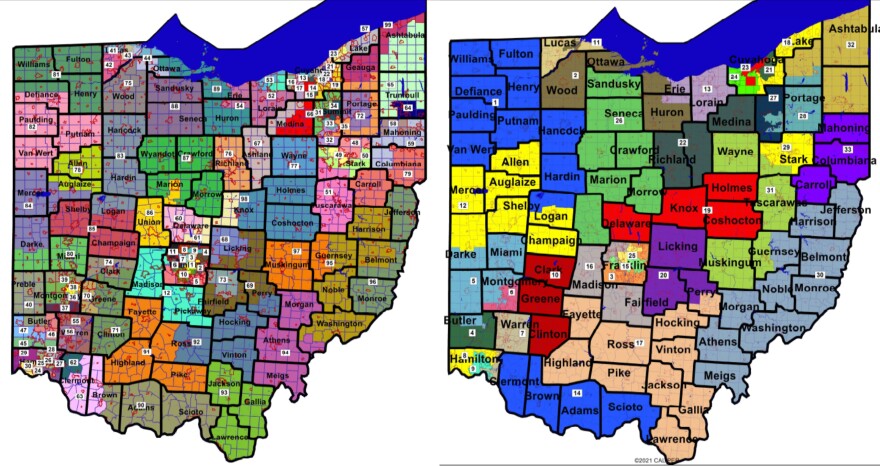There’s a new chapter in Ohio’s redistricting saga after Republicans picked up even more seats in the Ohio House and Ohio Senate using district maps that were ruled unconstitutional by the Ohio Supreme Court.
Ohio’s voter preference over the past 10 years splits about 54% Republican and 46% Democratic. The state’s new redistricting rules in the Ohio Constitution required members of the Ohio Redistricting Commission to draw maps that were proportional to that voter breakdown.
The final map approved by Republicans on the commission created 54 Republican-leaning and 45 Democratic-leaning districts in the House, along with 18 Republican and 15 Democratic districts in the Senate.
However, the Ohio Supreme Court ruled that map to be unconstitutional because, of the 45 Democratic district 16 were toss-ups, giving an unfair advantage to Republican party which did not have any toss-up districts.
On election night, Republicans won 12 of those 16 toss-up districts — which are districts with a voter base of Republicans and Democrats within a 3% margin. Republicans also won a district where Democrats were projected to have an advantage of less than 4% and another district where Democrats were projected to have an advantage of more than 11%.
In total, based on unofficial results, House Republicans will control 68 of Ohio’s 99 House seats.
The 16 toss-up districts among the 45 Democratic districts is considered asymmetrical to the zero toss-up Republican districts.
House Speaker Bob Cupp (R-Lima), who was co-chair of the Ohio Redistricting Commission, noted that Republican candidates performed better than expected in those toss-up districts and said the election results are proof that voters are responding positively to GOP policies.
“So this excuse that Democrats can't win in Democrat districts because they're unfairly drawn is actually a red herring. What really happens is people look at the individual candidates in the district and they found that our candidates were more in tune with what their interests were, with the issues that we're supporting than their opponent,” said Cupp.
On Feb. 24, when Republicans on the redistricting commission approved the map that was eventually used for Tuesday’s election, Sen. Vernon Sykes (D-Akron) said the number of toss-up districts would have a detrimental effect on the hope of making the map proportional to Ohio’s 54% to 46% split.
"We appreciate the idea that you maybe embrace the concept that you need to comply with the proportionality guidelines. But the court also indicated that symmetry was also important, and we don't believe that you've complied with it. We believe that you've made that worse," Sykes said.
The Ohio Redistricting Commission is expected to reconvene and make a sixth attempt at drawing a new House and Senate map that can be found valid by the Ohio Supreme Court.
Next year, the composition of the Ohio Supreme Court will change. Chief Justice Maureen O’Connor, a Republican who provided the key swing vote for Democrats in the decisions against the Republican-drawn maps will be leaving the bench due to age limits.
Republican Justice Sharon Kennedy won the race to succeed O’Connor, Kennedy has been vocal in her dissent against the majority opinion in those redistricting cases.



